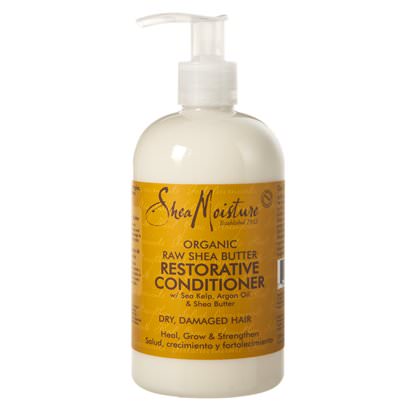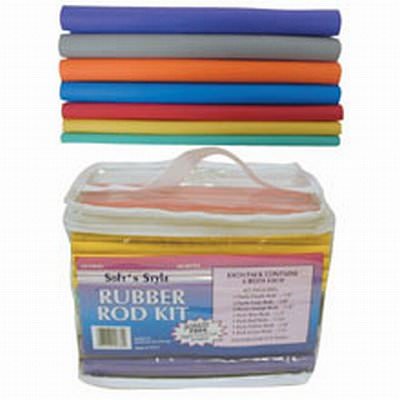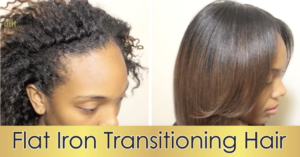Transitioning 101: An Example Regimen For A Transitioner

Finding a weekly washing and conditioning regimen sounds so simple but honestly there are several different ways to do it. Just assuming all transitioners wash their hair weekly is incorrect as well as assuming everyone even uses shampoo!
Despite the differences, there are ways to nail down a routine that will benefit each transitioner and create a solid foundation to ensure maximum moisture and length retention. Let’s face it…the secret is in the details, so here they are:
Prior To Wash day:
Wash day can be weekly, bi-weekly or even monthly for some transitioners. It really depends on your style. Most women wash their hair weekly or bi-weekly when relaxed but when transitioning you may have to alter this routine to fit your hair’s needs.
A lot of styles used by long term transitioners are curlier (roller sets, flexi rods, straw sets, bantu knots or twists) since it’s easier to blend relaxed and natural hair that way. It’s much harder to blend straight styles with both textures due to the reversion of the curly new growth.
With the line of demarcation (the hair that separates the two textures) being so fragile, detangling on wash day may be a slow process. It doesn’t mean it has to be a hard one and there are ways to make it easier on you and your hair.
Pre-pooing your hair prior to washing can help to eliminate tangles and get the hair soft and manageable. A pre-poo is a pre-wash treatment usually involving oil that has two benefits.
First, it helps retain much of the moisture our hair needs that often gets stripped by shampoos. Second, it removes some of the tangles our hair may have since it was styled since the last wash day. You can try coconut oil*, avocado oil* or olive oil as your prepoo.
Saturate your hair and work the oil into all strands of your hair while making sure to be as gentle as possible especially around the line of demarcation.
 To prevent dripping place a plastic cap over your hair and you can either sit under a dryer to for a hot oil treatment or just leave it alone and let your own body’s warmth be enough.
To prevent dripping place a plastic cap over your hair and you can either sit under a dryer to for a hot oil treatment or just leave it alone and let your own body’s warmth be enough.
Either way these oils high in saturated fat will penetrate the hair shaft. You can leave that oil in anywhere from 30 minutes to overnight.
Washday:
Part and wash your hair in sections. Doing this will also cut down on tangles thereby reducing breakage associated with transitioning.
Apply your shampoo (sulfate free shampoos or shampoo bars are great) but be gentle and wash your scalp with your fingertips and not your nails.
Massage with your fingertips in a downward direction and allow the water to aid in removing the tangles and the cleanser when you are through.
After rinsing out your cleanser, slather the conditioner into your hair. Yes, SLATHER! Our hair loves conditioner just about as much as it loves water and which conditioner you use depends on you and your hair’s needs but always find one that has a lot of slip.
Slip is a term to describe how easily a product (usually a conditioner or detangler) glides through your hair. The more slip the better as it aids in combating tangles.
Read this post for conditioner recommendations – The Best 6 Conditioners For Fabulous Slip!
Whenever you cleanse your hair make sure you follow this simple rule… YOU MUST DEEP CONDITION!!! Curly/kinky/coily hair is fragile but transitioning hair (due to the line of demarcation) is extremely fragile and regular deep conditioning* sessions are necessary.
Deep conditioners are usually thicker and richer than regular conditioners. You can also sit under a dryer for 30 minutes to an hour for maximum benefit of the deep conditioning* process.
Using a protein conditioner is a must as well but once a month should be enough for most. Doing them on every wash day is likely to be too much protein which can make your hair brittle and cause breakage.
Styling:
Now it’s time to begin to work on your style. Styles that require low manipulation or low tension on the hair are best while long term transitioning.
 Examples of high manipulated styles would be wash and go styles and high tension styles would be braids or sewn in weaves.
Examples of high manipulated styles would be wash and go styles and high tension styles would be braids or sewn in weaves.
The best styles for long term transtioners are:
► Straw sets
► Roller sets
► Flexi rods
► Twists /twistouts
► Braid outs
► Curlformers sets
► Bantu knots
► Buns
In-Between Washes:
This depends on your hairstyle. The biggest advice to give is to keep your hair moisturized and the best moisturizer in the world is water so make sure your hair creams, conditioners or oils mixtures have water as a major component.
Although many styles do not require frequent uses of water, never forget that water is important to healthy hair. Many women may take down their hair in whatever style it was during the day and twist it up at night after applying a few spritzes from their spray bottles or even just some oil. Each style has its own nightly maintenance and that may be altered from one head to the next.
Nightly Routine:
Having a nightly routine is vital to maintaining your style and keeping your hair happy. Sleeping with a satin bonnet* and/or sleeping on a satin pillowcase* will keep the cotton sheets and pillowcases from robbing moisture from our hair.
I have both and use both every night. With the curlier hair styles a satin bonnet* or a silk scarf may be all you need to keep your hair perfect until morning. These steps will bring you to your next washday and like I stated above that depends on you and your hair.
Sometimes we need to wash it sooner because of frequent workouts, going out and being in a smoky bar or kitchen, or wanting to get rid of a product build-up. There is no hard and fast rule about when one should wash their hair.
Over time you will create your own routine or just know when it is time for another wash day. Remember that moisture is crucial, your hair loves water and conditioner and having a sound nightly routine. Your hair will reward you with healthy and happy tresses in return.




